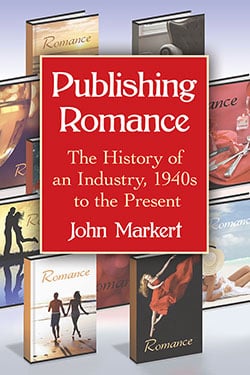Publishing Romance
The History of an Industry, 1940s to the Present
$29.95
In stock
About the Book
Romance novels have attracted considerable attention since their mass market debut in 1939, yet seldom has the industry itself been analyzed. Founded in 1949, Harlequin quickly gained market domination with their contemporary romances. Other publishers countered with historical romances, leading to the rise of “bodice-ripper” romances in the 1970s. The liberation of the romance novel’s content during the 1980s brought a vitality to the market that was dubbed a revolution, but the real romance revolution began in the 1990s with developments in the mainstream publishing industry and continues today. This book traces the history and evolution of the romance industry, covering successful (and not so successful) trends and describing changes in romance publishing that paved the way for the many popular subgenres flooding the market in the 21st century.
About the Author(s)
Bibliographic Details
John Markert
Format: softcover (6 x 9)
Pages: 344
Bibliographic Info: 19 photos, notes, bibliography, index
Copyright Date: 2016
pISBN: 978-0-7864-9490-3
eISBN: 978-1-4766-2124-1
Imprint: McFarland
Table of Contents
Acknowledgments vi
Introduction 1
1. Paperbacks in Society 15
2. The World of Harlequin: 1949–1979 26
3. The Four Phases of Love: American Romance Publishing in the Seventies 44
4. Silhouette Books: Challenging Harlequin’s Supremacy 66
5. The New Dawn: Romance Publishing Comes of Age 85
6. Risky Business: Rushing to Cash In on the Romance Craze 105
7. The Editorial Ear: Selective Listening 126
8. Alive and Kicking: Harlequin Regains Market Supremacy 140
9. Line Diversification: The Byword of the New Millennium 198
10. Romance Publishing at the Outset of the New Millennium: Market Share, Competition and Content Innovation 265
Conclusion 284
Chapter Notes 301
Selected Bibliography 326
Index 331
Book Reviews & Awards
“Despite romance novels making up 23 percent of the U.S. fiction market…the genre is still pushed aside as mommy porn or the default reading of lonely cat-laden spinsters” — Washington Post





